#warren g. harding
Explore tagged Tumblr posts
Text








Photographs of some past Presidential funeral processions through Washington, D.C.: Abraham Lincoln (1865); William McKinley (1901); William Howard Taft (1930); Warren G. Harding (1923); Franklin D. Roosevelt (1945); John F. Kennedy (1963); Ronald Reagan (2004); and, George H.W. Bush (2018).
#History#Presidents#Presidential History#Presidency#Presidential Funerals#Presidential Deaths#State Funerals#Funeral Processions#Washington D.C.#White House#White House History#Abraham Lincoln#Death of Abraham Lincoln#Funeral of Abraham Lincoln#William McKinley#President Lincoln#President McKinley#Funeral of William McKinley#William Howard Taft#President Taft#Chief Justice Taft#Funeral of William Howard Taft#Warren G. Harding#President Harding#Funeral of Warren G. Harding#Franklin D. Roosevelt#FDR#President Roosevelt#Funeral of Franklin D. Roosevelt#John F. Kennedy
36 notes
·
View notes
Text

Matt Davies :: Shirk. http://Newsday.com/matt
* * * *
LETTERS FROM AN AMERICAN
November 24, 2024
Heather Cox Richardson
Nov 25, 2024
Since the night of the November 5, election, Trump and his allies have insisted that he won what Trump called “an unprecedented and powerful mandate.” But as the numbers have continued to come in, it’s clear that such a declaration is both an attempt to encourage donations— fundraising emails refer to Trump’s “LANDSLIDE VICTORY”—and an attempt to create the illusion of power to push his agenda.
The reality is that Trump’s margin over Democratic nominee Vice President Kamala Harris will likely end up around 1.5 points. According to James M. Lindsay, writing for the Council of Foreign Relations, it is the fifth smallest since 1900, which covers 32 presidential races. Exit polls showed that Trump’s favorability rating was just 48% and that more voters chose someone other than Trump. And, as Lindsay points out, Trump fell 4 million votes short of President Joe Biden in 2020.
Political science professor Lynn Vavreck of the University of California, Los Angeles, told Peter Baker of the New York Times: “If the definition of landslide is you win both the popular vote and Electoral College vote, that’s a new definition” On the other hand, she added, “Nobody gains any kind of influence by going out and saying, ‘I barely won, and now I want to do these big things.’”
Trump’s allies are indeed setting out to do big things, and they are big things that are unpopular.
Trump ran away from Project 2025 during the campaign because it was so unpopular. He denied he knew anything about it, calling it “ridiculous and abysmal,” and on September 16 the leader of Trump’s transition team, Howard Lutnick, said there were “Absolutely zero. No connection. Zero” ties between the team and Project 2025. Now, though, Trump has done an about-face and has said he will nominate at least five people associated with Project 2025 to his administration.
Those nominees include Russell Vought, one of the project's key authors, who calls for dramatically increasing the powers of the president; Tom Homan, who as acting director of Immigration and Customs Enforcement (ICE) oversaw the separation of children from their parents; John Ratcliffe, whom the Senate refused in 2019 to confirm as Director of National Intelligence because he had no experience in intelligence; Brendan Carr, whom Trump wants to put at the head of the Federal Communications Commission and who is already trying to silence critics by warning he will punish broadcasters who Trump feels have been unfair to him; and Stephen Miller, the fervently anti-immigrant ideologue.
Project 2025 calls for the creation of an extraordinarily strong president who will gut the civil service and replace its nonpartisan officials with those who are loyal to the president. It calls for filling the military and the Department of Justice with those loyal to the president. And then, the project plans that with his new power, the president will impose Christian nationalism on the United States of America, ending immigration, and curtailing rights for LGBTQ+ individuals as well as women and racial and ethnic minorities.
Project 2025 was unpopular when people learned about it.
And then there is the threat of dramatic cuts to the U.S. government, suggested by the so-called “Department of Government Efficiency,” or DOGE, headed by billionaires Elon Musk and Vivek Ramaswamy. They are calling for cuts of $2 trillion to the items in the national budget that provide a safety net for ordinary Americans at the same time that Trump is promising additional tax cuts for the wealthy and corporations. Musk, meanwhile, is posturing as if he is the actual president, threatening on Saturday, for example: “Those who break the law will be arrested and that includes mayors.”
On Meet the Press today, current representative and senator-elect Adam Schiff (D-CA) reacted to the “dictator talk,” with which Trump is threatening his political opponents, pointing out that "[t]he American people…voted on the basis of the economy—they wanted change to the economy—they weren’t voting for dictatorship. So I think he is going to misread his mandate if that’s what he thinks voters chose him for.”
That Trump and his team are trying desperately to portray a marginal victory as a landslide in order to put an extremist unpopular agenda into place suggests another dynamic at work.
For all Trump’s claims of power, he is a 78-year-old man who is declining mentally and who neither commands a majority of voters nor has shown signs of being able to transfer his voters to a leader in waiting.
Trump’s team deployed Vice President–elect J.D. Vance to the Senate to drum up votes for the confirmation of Florida representative Matt Gaetz to become the United States attorney general. But Vance has only been in the Senate since 2022 and is not noticeably popular. He—and therefore Trump—was unable to find the votes the wildly unqualified Gaetz needed for confirmation, forcing him to withdraw his name from consideration.
The next day, Gaetz began to advertise on Cameo, an app that allows patrons to commission a personalized video for fans, asking a minimum of $550.00 for a recording. Gaetz went from United States representative to Trump’s nominee for U.S. attorney general to making videos for Cameo in a little over a week.
It is a truism in studying politics that it’s far more important to follow power than it is to follow people. Right now, there is a lot of power sloshing around in Washington, D.C.
Trump is trying to convince the country that he has scooped up all that power. But in fact, he has won reelection by less than 50% of the vote, and his vice president is not popular. The policies Trump is embracing are so unpopular that he himself ran away from them when he was campaigning. And now he has proposed filling his administration with a number of highly unqualified figures who, knowing the only reason they have been elevated is that they are loyal to Trump, will go along with his worst instincts. With that baggage, it is not clear he will be able to cement enough power to bring his plans to life.
If power remains loose, it could get scooped up by cabinet officials, as it was during a similarly chaotic period in the 1920s. In that era, voters elected to the presidency former newspaperman and Republican backbencher Warren G. Harding of Ohio, who promised to return the country to “normalcy” after eight years of the presidency of Democrat Woodrow Wilson and the nation’s engagement in World War I. That election really was a landslide, with Harding and his running mate, Calvin Coolidge, winning more than 60% of the popular vote in 1920.
But Harding was badly out of his depth in the presidency and spent his time with cronies playing bridge and drinking upstairs at the White House—despite Prohibition—while corrupt members of his administration grabbed all they could.
With such a void in the executive branch, power could have flowed to Congress. But after twenty years of opposing first Theodore Roosevelt, and then William Howard Taft, and then Woodrow Wilson, Congress had become adept at opposing presidents but had split into factions that made it unable to transition to using power, rather than opposing its use.
And so power in that era flowed to members of Harding’s Cabinet, primarily to Treasury Secretary Andrew Mellon and Secretary of Commerce Herbert Hoover, who put into place a fervently pro-business government that continued after Harding’s untimely death into the presidency of Calvin Coolidge, who made little effort to recover the power Harding had abandoned. After Hoover became president and their system fell to ruin in the Great Depression, Franklin Delano Roosevelt took their lost power and used it to create a new type of government.
In this moment, Trump’s people are working hard to convince Americans that they have gathered up all the power in Washington, D.C., but that power is actually still sloshing around. Trump is trying to force through the Senate a number of unqualified and dangerous nominees for high-level positions, threatening Republican senators that if they don’t bow to him, Elon Musk will fund primary challengers, or suggesting he will push them into recess so he can appoint his nominees without their constitutionally-mandated advice and consent.
But Trump and his people do not, in fact, have a mandate. Trump is old and weak, and power is up for grabs. It is possible that MAGA Republicans will, in the end, force Republican senators into their camp, permitting Trump and his cronies to do whatever they wish.
It is also possible that Republican senators will themselves take back for Congress the power that has lately concentrated in presidents, check the most dangerous and unpopular of Trump’s plans, and begin the process of restoring the balance of the three branches of government.
LETTERS FROM AN AMERICAN
HEATHER COX RICHARDSON
#Matt Davies#Heather Cox Richardson#unqualifed and dangerous#Republican Senators#background check#Warren G. Harding#the American Presidency#American History#history#dictator talk
11 notes
·
View notes
Text

#Did You Know?#facts#trivia#U.S. history#U.S. presidents#Warren G. Harding#Warren Harding#squirrels#ice cream#ice-cream cone#you can’t make this stuff up
112 notes
·
View notes
Text
Warren G. Harding

Physique: Average Build Height: 6’ (1.83 m)
Warren Gamaliel Harding (November 2, 1865 – August 2, 1923) was the 29th president of the United States, serving from 1921 until his death in 1923. A member of the Republican Party, he was one of the most popular sitting U.S. presidents. After his death, a number of scandals were exposed, including Teapot Dome, as well as an extramarital affair with Nan Britton, which tarnished his reputation where he is generally regarded as one of the worst presidents. Harding died of a heart attack in San Francisco while on a western tour and was succeeded by Vice President Calvin Coolidge.
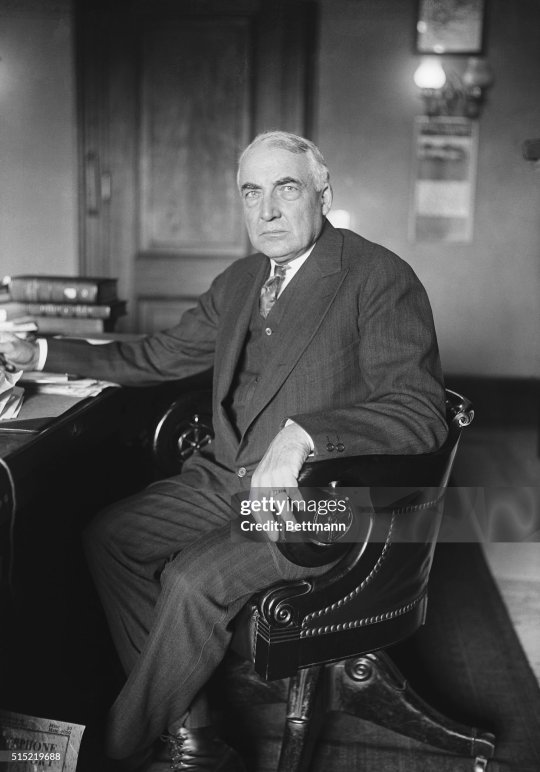
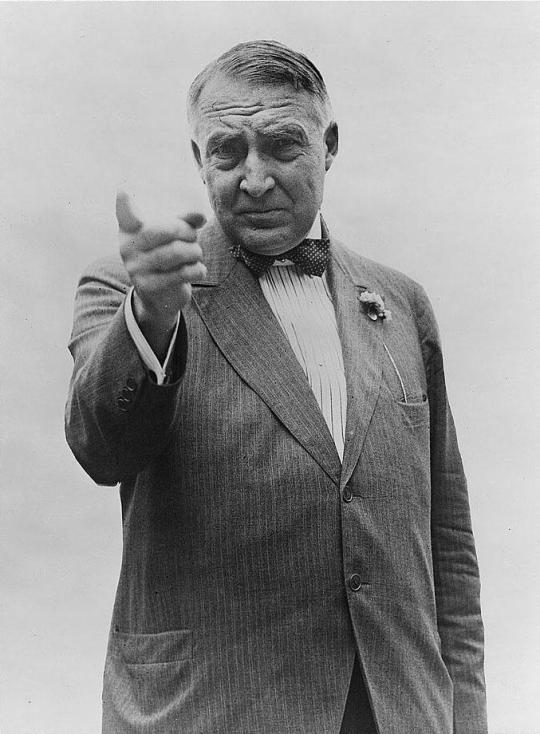

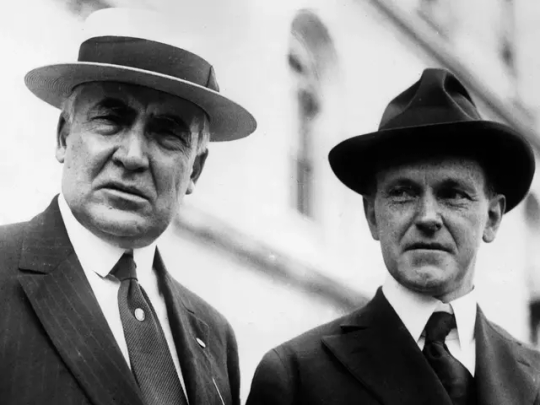
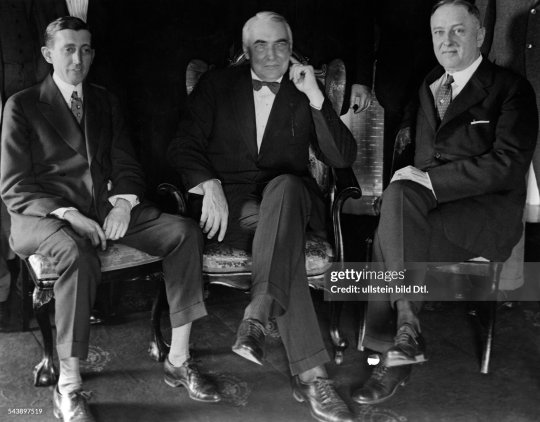
Handsome with a grumpy look who was always well dressed and well groomed, many historians have argued people only voted for him because he “looked presidential”. I think he did and he definitely look fuckable.
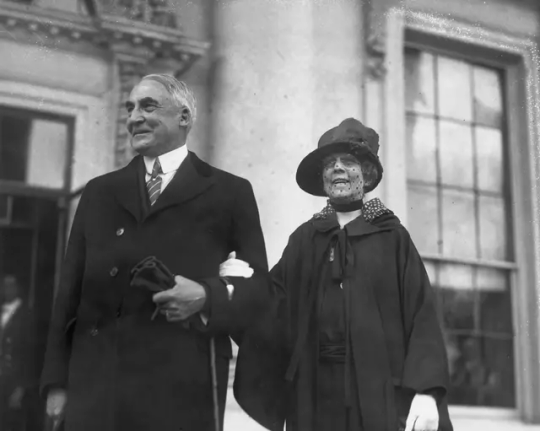
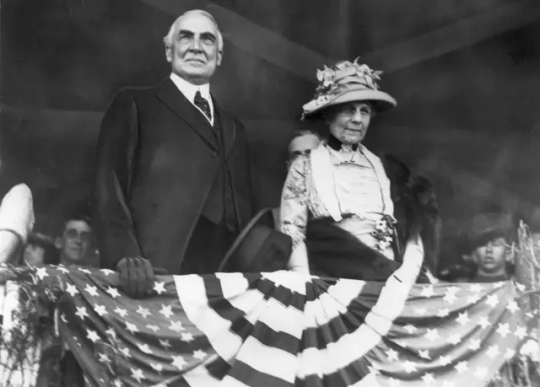


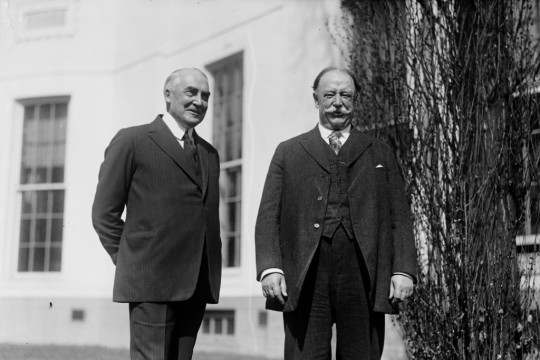
Harding married Florence Kling De Wolfe, a divorcee with one son. The Hardings had no children together. Harding reportedly had affairs with Carrie Phillips (his wife’s best friend) and Nan Britton (She lost her virginity to him when she was twenty and Harding was fifty) who bare a child during the 1910s and early 1920s, prior to his death in 1923. He wrote tawdry letters to all his lovers filled with euphemism and sexual innuendoes (“Jerry” was the code word for his penis.) And he had so many female admirers (nicknamed his lollapaloozas) that his security guards worked overtime, keeping them at bay.


What else do I know about other than he being a whore. He often play poker with his Cabinet, nicknamed the “Ohio gang”, used tobacco in all its forms - cigarettes, cigars, snuff, a pipe and chewing tobacco, serve bootleg whiskey to his guests and would also sneak off in the middle of the night to watch burlesque shows. Now I wish I could get him drunk, play poker with him and put my ass on the line. Or something to that effect.

33 notes
·
View notes
Text
Princeton University Presidential Straw Poll, October 21, 1920
Harding: 877 Cox: 464 Debs: 9 Watkins: 9 Christiansen: 5 (Source)
#On This Day#1920s#presidential election#poll#Princeton#Warren G. Harding#James M. Cox#PrincetonU#Princeton University
2 notes
·
View notes
Text
Mini-Quest: Warren Gamaliel Harding: Where i look too deeply into one of America’s forgotten presidents

View On WordPress
0 notes
Text

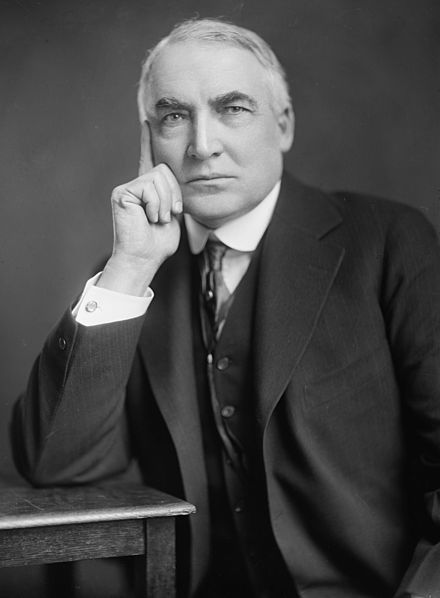
On This Day: The first telephone was installed in the white house under Rutherford B. Hayes, but it wasn't used for phone sex until Warren G. Harding
0 notes
Text

ITS SO OVER
1 note
·
View note
Text
the roaring twenties 🥂



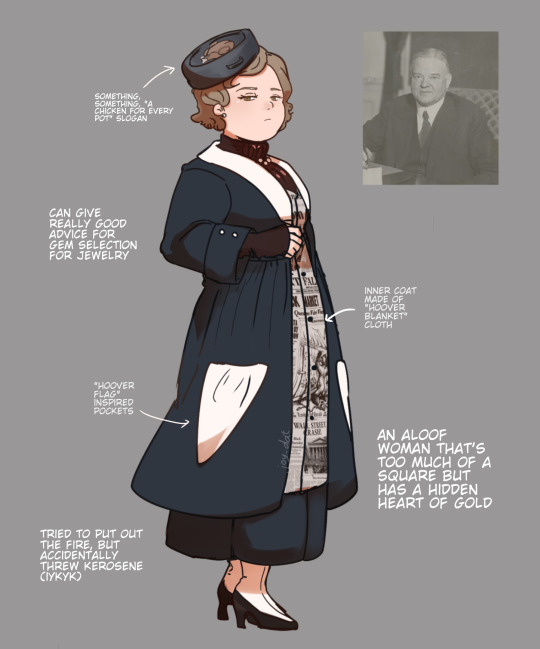

needed a slight breather from studying, so i continued some of my anime girl president doodles
(aight, back to studying and my hiatus)
context of these doodles is in the captions of this post.
also credit to @tinytimism for suggesting me to make harding
#cursed anime girlification(?)#us presidents#us history#warren g harding#calvin coolidge#herbert hoover#shitpost
134 notes
·
View notes
Text
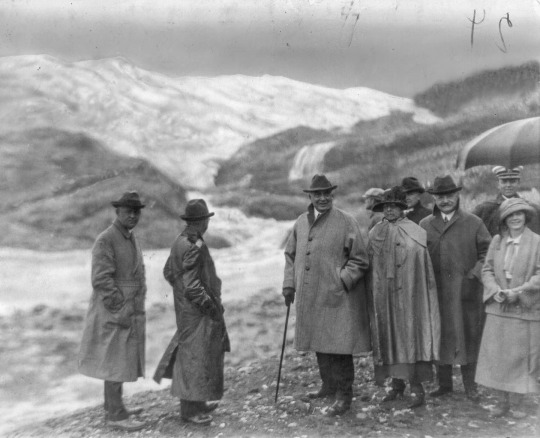
Exactly 100 years ago, President Warren Gamaliel Harding escaped the sweltering summer weather and increasingly dark political climate of Washington, D.C. to embark upon a lengthy cross-country trip through parts of the American West still relatively unaccustomed to frequent visits by the nation’s Chief Executive. Billed as a “Voyage of Understanding”, Harding’s trip was seen as a prelude to his potential campaign for re-election the following year, and an opportunity to put some literal and figurative distance between the President and the rumors of rampant corruption swirling around some of Harding’s friends and closest aides from Ohio, as well as several Cabinet members — rumors eventually proven to be true, resulting in indictments, convictions, prison sentences, and even suicides. As President Harding prepared for his Western tour, he could feel the heat as the scandals plaguing his Administration began to reach a boiling point. Speaking privately to the famous journalist and editor William Allen White, Harding said of the Presidency, “My God, this is a hell of a job! I have no trouble with my enemies…But my damn friends, they’re the ones that keep me walking the floor nights.”
Harding’s planned 15,000-mile Voyage of Understanding began on June 20, 1923. Traveling aboard the private Pullman railroad car Superb, the 57-year-old President left Washington, D.C. accompanied by First Lady Florence Harding, Speaker of the House of Representatives Frederick H. Gillett, new Interior Secretary Hubert Work, and a large retinue of aides, friends and their families, doctors, Secret Service agents, and members of the press. Work had become Secretary of the Interior a few months earlier when the previous Secretary, Albert B. Fall, became the “fall guy” for the Teapot Dome scandal. For his role in the scandal, Fall was later convicted of accepting bribes — the first former Cabinet member in American history to serve time in prison for crimes committed while in office. At later points along the journey, Harding’s party was also joined by Secretary of Agriculture Henry C. Wallace (father of future Vice President Henry A. Wallace) and Secretary of Commerce (and future President) Herbert Hoover.

The last week of June 1923 was spent traveling through the Mountain West — Colorado, Wyoming, Utah, Idaho, Montana, and Yellowstone National Park. The beginning of July saw the Presidential party in the Northwest and celebrating Independence Day in Portland, Oregon before boarding the USS Henderson in Tacoma, Washington on July 5, 1923 to sail to Alaska. One of the expected highlights of the Voyage of Understanding was the northernmost leg of the trip, as Harding became the first incumbent President of the United States to visit Alaska and Canada. The Territory of Alaska had been purchased for the United States by Secretary of State William Seward in 1867 when Warren G. Harding was two years old, and at the time of Harding’s visit, Alaska was still 35 years from being admitted to the Union as the 49th state. But the President spent nearly the entire month of July traveling through the state, mixing public appearances with private recreation and sightseeing. On July 15, 1923, Harding hammered a golden spike in Nenana, Alaska to officially complete the Alaska Railroad. And ten days later, the President crossed into Canada, fishing on the Campbell River in British Columbia on July 25th and then making an official visit the following day in Vancouver, where he was greeted by one of the largest crowds of his voyage — estimated at over 40,000 people — and where he also squeezed in a round of golf at the exclusive Shaughnessy Golf Club.
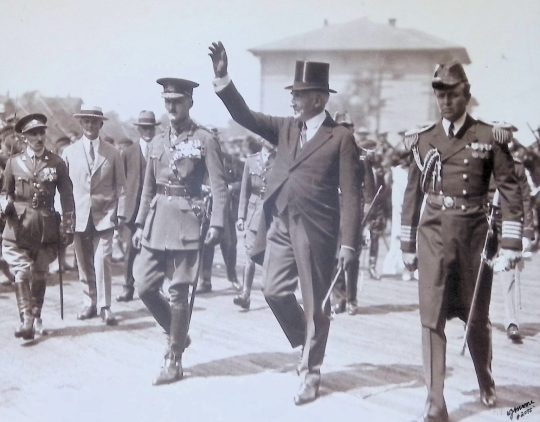
The President returned to American soil on July 27th, arriving in Seattle and making several speeches in a busy six-hour period — first to Camp Fire Girls at Volunteer Park, then to nearly 30,000 Boy Scouts at Woodland Park, and finishing the day addressing over 30,000 people at what is now Husky Stadium at the University of Washington where he predicted statehood for Alaska, where he had spent most of the month. After making a brief appearance that evening at the Seattle Press Club, Harding boarded his train that night to travel to Portland, Oregon.
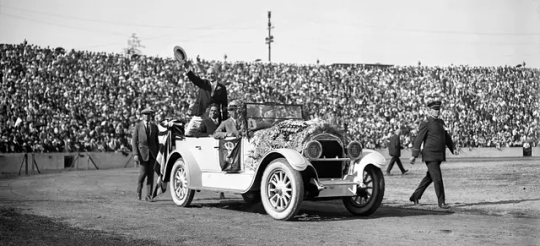
But something was not right. The President seemed to be exhausted, perhaps from the grueling trip through geography much wilder than Harding’s native Ohio or swampy Washington, D.C. Despite his exciting journey through Alaska and the energetic welcome provided by the Canadian people, Harding was clearly wiped out by the time he reached British Columbia. The President did head to the country club while in Vancouver, but he was so tired that after six holes of golf his foursome skipped directly to the eighteenth hole, seemingly completing the round without tipping off the press that Harding couldn’t play the entire course.
From the White House, nine days before embarking upon his Voyage of Understanding, Harding wrote a quick note to Solicitor General James M. Beck who had wished the President a safe journey on his upcoming trip. Thanking Beck, Harding wrote, “I shall try to remember not to overdo (it) in crossing the continent.” And, on June 14, 1923, six days before leaving, President Harding wrote a short letter to a young girl from Hartford, Connecticut named Vivian Little, who had recently sent the President a four-leaf clover as a good luck charm. “Thank you so much for the four-leaf clover which you were so good as to press and send to me,” the President wrote. “I hope it will bring me good luck and that it will bring you still more of the same.”
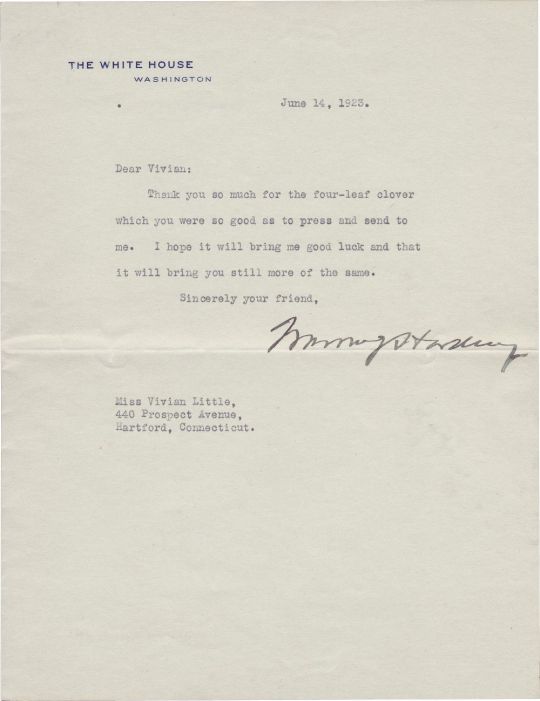
However, any luck that President Warren G. Harding still had seemed to be running out. Ill and exhausted after leaving Vancouver, Harding tried to rest aboard the USS Henderson as it sailed to Seattle in the early morning hours of July 27. At some point around 3 AM, Harding and the other passengers aboard the Henderson were jolted awake as the ship crashed into the USS Zeilin, an American destroyer accompanying the Presidential party while they traveled through the foggy Puget Sound. This was not the first mishap of the Voyage of Understanding. While traveling through Colorado early in the trip, three people from the President’s party had been killed in a car accident. And now, after a few weeks in Alaska where Harding was able to at least temporarily forget about his Administration’s many troubles, the President was not only sick and tired but two of his Navy’s ships had just smashed into each other almost as soon as he had returned to the continental United States. While the USS Zeilin was badly damaged in the collision, the USS Henderson was not and there were apparently no major injuries on either vessel. But when the President’s valet, Major Arthur Brooks, came to Harding’s stateroom aboard the Henderson to inform him that the captain was calling for all hands on deck, he found the depressed President lying on his bed with his face buried in his hands. “I hope the boat sinks,” President Harding quietly muttered.
It was just hours later that Harding made his whirlwind tour through Seattle, putting on a brave face at his public appearances, but clearly not feeling well. While he was never considered a brilliant orator like Abraham Lincoln, Benjamin Harrison, or his immediate predecessor, Woodrow Wilson, Harding was a strong speaker and excellent communicator who had a unique ability to connect with audiences, but he was obviously — and unusually — halting and confused while speaking in Seattle on July 27th. As he boarded his train at Seattle’s King Street Station that night, Harding was examined by his doctor and by Interior Secretary Hubert Work, who had once been a physician, and they decided to cancel the next several days of planned activities. Instead of stopping in Portland and then visiting Yosemite National Park, the Presidential party was ordered to proceed directly to San Francisco where Harding could rest before giving a speech on the radio planned for July 31st which was expected to be heard by over 5 million people.
Despite the four-leaf clover that had been sent to him by Vivian Little before his Voyage of Understanding, Warren Gamaliel Harding’s luck seemed to be running out. And, as his train sped through Oregon en route to San Francisco’s Palace Hotel on July 28, 1923, President Harding was also running out of time.
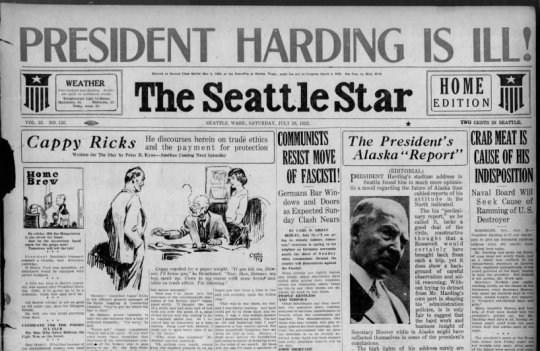
#History#Presidents#Warren G. Harding#President Harding#Death of Warren G. Harding#100 Years Ago#100th Anniversary#Centennial#Presidential History#Voyage of Understanding#Politics#Political History#Harding Administration#Presidential Deaths#Teapot Dome#Presidential Scandals#Presidential Corruption#Political Scandals#Political Corruption
50 notes
·
View notes
Text

I'm probably extremely right and extremely wrong
#presidents#meme#andrew jackson#john f kennedy#warren g harding#franklin roosevelt#james madison#calvin coolidge#ronald reagan#lyndon b johnson#ulysses s grant#millard fillmore#chester arthur#george hw bush#franklin pierce#theodore roosevelt#james buchanan#james k polk#george w bush#harry truman
245 notes
·
View notes
Text
I'm reading nan britton's memoir about being the mother of warren g. harding's love child and the way she talks about her brother in law is cracking me the hell up. real Steve Carlsberg's Unacceptably Dry PTA Scones energy going on here

how beautiful my beautiful baby was! how amazing my amazing sister was! how much I appreciated that my brother in law and I had so far successfully managed not to rend one another asunder with our teeth! it was all so lovely
#books#psir#here i thought warren g. harding was just the teapot dome guy. come to find out he was even busier than that
22 notes
·
View notes
Text
Sometimes when you tell people that you don’t know your family history, they’re like ‘don’t you wanna know where your family is from?’ And like, no. I don’t. Also I’m white and my last name is Britton. I’ve got an idea.
#I do have a running theory that I’m related to Warren G Harding that I would like to never confirm or denied#it’s funnier to not know
37 notes
·
View notes
Text

















Two post in one edition from my main
Found these cool presentations on my fyp back in August. As someone who loves pop culture and had special interests on US presidents, all of them are on point!
#american history#us history#us presidents#dwight eisenhower#bill clinton#george washington#gerald ford#andrew jackson#james madison#james k polk#william mckinley#jimmy carter#grover cleveland#warren g harding#warren harding#theodore roosevelt#teddy roosevelt#james monroe#ronald reagan#calvin coolidge#fdr#franklin d. roosevelt
24 notes
·
View notes
Text
I drew the US Presidents ⁉️⁉️

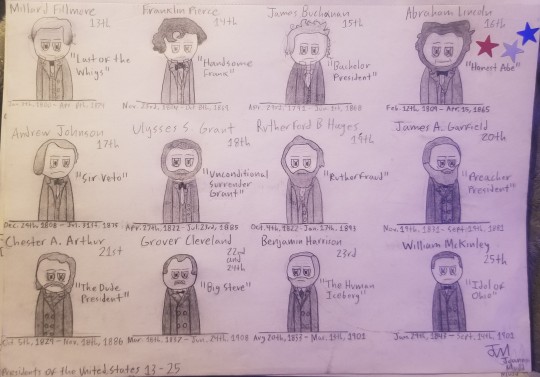
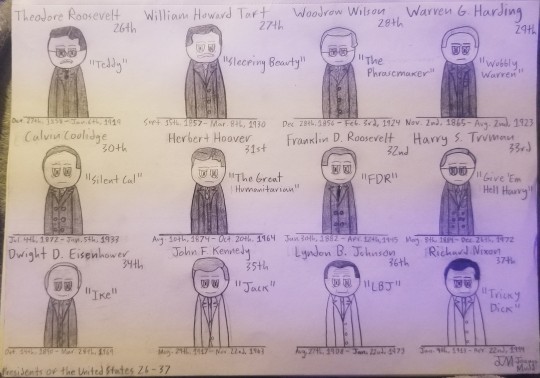
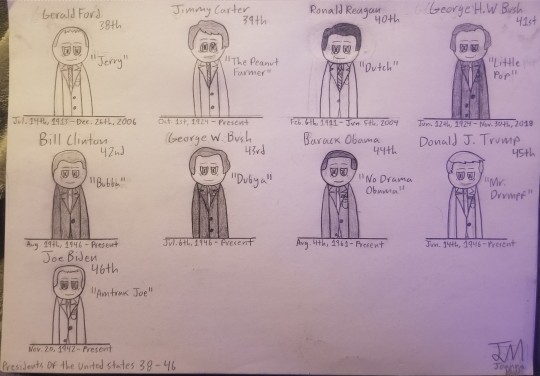
Constructive criticism is not allowed ⁉️⁉️(Because I only draw for fun lol, not mad or anything tho)
I couldn't tag anymore presidents 💔💔
#u.s. presidents#george washington#john adams#thomas jefferson#james madison#james monroe#john quincy adams#andrew jackson#martin van buren#william henry harrison#john tyler#james k polk#zachary taylor#millard fillmore#franklin pierce#james buchanan#abraham lincoln#andrew johnson#ulysses s grant#rutherford b hayes#james a garfield#chester a arthur#grover cleveland#benjamin harrison#william mckinley#theodore roosevelt#william howard taft#woodrow wilson#warren g harding#calvin coolidge
52 notes
·
View notes
Text
are we manifesting our destiny or returning to normalcy today because HOLY SHIT WE HAVE TWOOOOOO BIRTHDAAAAAYYYYYSSSSSSSSS


#us presidents#presidents#james k polk#warren g harding#i find this to be a very Nice and Awesome coincident
22 notes
·
View notes